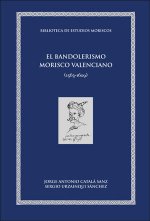
Kód: 15196207
Greenhouse-Impact on Cold-Climate
Autor M. Boer, E. Koster
Climatic change and sea level rise, which are thought to result from the enhanced greenhouse forcing of the steadily increasing concentrations of atmospheric carbon dioxide and other so-called greenhouses gases such as methane (CH ... celý popis
- Jazyk:
 Angličtina
Angličtina - Väzba: Pevná
- Počet strán: 151
Nakladateľ: Schweizerbart'sche Verlagsbuchhandlung, 1992
- Viac informácií o knihe

65.02 €
Dostupnosť:
50 % šanca Máme informáciu, že by titul mohol byť dostupný. Na základe vašej objednávky sa ho pokúsime do 6 týždňov zabezpečiť.
Máme informáciu, že by titul mohol byť dostupný. Na základe vašej objednávky sa ho pokúsime do 6 týždňov zabezpečiť.Prehľadáme celý svet
Mohlo by sa vám tiež páčiť
-

Millennium Development Goals
59.49 € -

Men's Rights, Gender, and Social Media
145.82 € -

Hundert Jahre (1770-1870)
68.30 € -

Thrombose nach Versuchen und Leichenbefunden
27.33 € -

El bandolerismo morisco valenciano
27.33 € -

Drugaya zhizn'
47 € -

Robert Schumann's Leben
73.93 €
Darčekový poukaz: Radosť zaručená
- Darujte poukaz v ľubovoľnej hodnote, a my sa postaráme o zvyšok.
- Poukaz sa vzťahuje na všetky produkty v našej ponuke.
- Elektronický poukaz si vytlačíte z e-mailu a môžete ho ihneď darovať.
- Platnosť poukazu je 12 mesiacov od dátumu vystavenia.
Informovať o naskladnení knihy
Zadajte do formulára e-mailovú adresu a akonáhle knihu naskladníme, zašleme vám o tom správu. Postrážime všetko za vás.
Viac informácií o knihe Greenhouse-Impact on Cold-Climate
Nákupom získate 161 bodov
 Anotácia knihy
Anotácia knihy
Climatic change and sea level rise, which are thought to result from the enhanced greenhouse forcing of the steadily increasing concentrations of atmospheric carbon dioxide and other so-called greenhouses gases such as methane (CH4), nitrous oxide (N20) and chlorofluorocarbons (CFC's) has become a topic of major scientific and political concern. The global dimension of the problem and the potentially hazardous implications are leading to calls for a large research effort to quantify the nature, magnitude and rate of climate change and sea level rise, the impact on the natural environment and society, as well as the feedbacks to the global climate system. Outlines for this research effort have been formulated, amongst others, by the International Geosphere-Biosphere Programme (1GBP 1990) of the International Council of Scientific Unions (ICSU). The WMO/UNEP Intergovernmental Panel on Climate Change (IPCC) recently predicted a rate of increase of global mean temperature during the next century of 0.1 to 0.3°C per decade with an uncertainty range of 0.2 to 0.5°C per decade (HOUGHTON et al. 1990). Changes in all climate variables (e.g. winds, precipitation, evaporation) will occur in parallel with this global-mean warming although varying substantially from region to region and from season to season (HULME et al. 1990). Current climate scenarios show that large latitudinal differences are likely to occur, which have the feature of a smaller temperature increase of half the global mean in the tropical regions and a larger increase of twice the global mean in high-latitude regions (Houghton et al. 1990). Changes in mean annual temperatures of a comparable magnitude, and sometimes even of a similar rate of change (e.g. during the Younger Dryas Period, ± 11000-10000 BP), as those envisaged to result from a doubled greenhouse forcing of the atmosphere, have occurred in the past (Berger & Labeyrie 1985) and may serve as analogues for future changes. From paleoclimatic and paleo-environmental constructions we know that the major changes in the geological past and the minor deviations since historical times (e.g. Climate Optimum of the Middle ages, Little Ice age), have caused significant alteration in the spatial distribution of plant and animal species (e.g. Huntley & Birks 1983, Birks 1990), in the frequency and intensity of geomorphological processes (e.g. Derbyshire 1976), and in land use (e.g. Parry et al. 1988). A number of recent experiments, in which present climate - life zone relationships have been extrapolated towards the warmer, hypothetical high-C02 situation, have shown a large 'mismatch' between the present distribution of vegetation types or life zones and the future bioclimatic zonation (e.g. Emanuel et al. 1985, Rizzo & Wiken 1989, Ozenda & Borel 1990). Global climate warming of several degrees Celcius over a time span of several decades to a century may thus be expected to have a pronounced impact on the structure and functioning of terrestrial ecosystems and landscapes.
 Parametre knihy
Parametre knihy
65.02 €
- Celý názov: Greenhouse-Impact on Cold-Climate
- Podnázov: Ecosystems and Landscapes Selected papers of the European Conference on Landscape Ecological Impact of Climatic Change, Lunteren, The Netherlands, December 3-7, 1989
- Autor: M. Boer, E. Koster
- Jazyk:
 Angličtina
Angličtina - Väzba: Pevná
- Počet strán: 151
- EAN: 9783510653638
- ID: 15196207
- Nakladateľ: Schweizerbart'sche Verlagsbuchhandlung
- Hmotnosť: 470 g
- Rozmery: 240 × 170 × 12 mm
- Rok vydania: 1992
Obľúbené z iného súdka
-

Dune
13.10 € -

Haunting Adeline
30.81 € -

Berserk Deluxe Volume 2
52.63 € -

White Nights
3.57 € -24 % -

Powerless
12.48 € -4 % -

Atomic Habits
15.97 € -15 % -

Dune Messiah
9 € -20 % -

Berserk Deluxe Volume 3
52.83 € -

One Day
12.59 € -13 % -

Berserk Deluxe Volume 1
44.43 € -13 % -

Iron Flame
16.27 € -19 % -

Surrounded by Idiots
10.13 € -16 % -

Harry Potter and the Prisoner of Azkaban (Minalima Edition)
27.84 € -32 % -

Gravity Falls Journal 3
22.01 € -

Heaven Official's Blessing: Tian Guan Ci Fu (Novel) Vol. 1
22.01 € -

The Creative Act
24.06 € -

Dune
9.72 € -19 % -

Hunting Adeline
31.84 € -

A Little Life
17.50 € -

Children of Dune
8.80 € -22 % -

Heaven Official's Blessing: Tian Guan Ci Fu (Novel) Vol. 2
25.28 € -

Bungo Stray Dogs, Vol. 8 (light novel)
16.07 € -1 % -

Percy Jackson and the Olympians 5 Book Paperback Boxed Set
47.81 € -

Solo Leveling, Vol. 1
21.50 € -

The Prisoner's Throne
10.64 € -21 % -

Court of Thorns and Roses
9.31 € -22 % -

Cry Baby Coloring Book
10.85 € -4 % -

Fourth Wing
16.68 € -16 % -

Icebreaker
9.41 € -16 % -

Berserk Deluxe Volume 6
47.81 € -6 % -

Avatar, the Last Airbender: The Kyoshi Novels (Box Set)
27.54 € -33 % -

The 48 Laws of Power
26.92 € -1 % -

House of Leaves
23.24 € -4 % -

Twisted Lies
9.72 € -19 % -

Dune Messiah
12.69 € -12 % -

No Longer Human
16.99 € -

48 Laws Of Power
22.62 € -5 % -

Twisted Games
9.41 € -22 % -

Caraval Paperback Boxed Set
39.83 € -8 % -

Solo Leveling, Vol. 2
22.42 € -

Open Circuits
34.40 € -16 % -

Berserk Deluxe Volume 5
51.30 € -

Heaven Official's Blessing: Tian Guan Ci Fu (Novel) Vol. 3
16.78 € -19 % -

Berserk Deluxe Volume 4
46.59 € -9 % -

Court of Mist and Fury
9.31 € -20 % -

SOLO LEVELING V08
22.42 € -

English File Upper Intermediate Multipack A (4th)
22.21 € -

CHAINSAW MAN V14
11.25 € -14 % -

Before the Coffee Gets Cold
10.44 € -20 %
Osobný odber Bratislava a 2642 dalších
Copyright ©2008-24 najlacnejsie-knihy.sk Všetky práva vyhradenéSúkromieCookies


 21 miliónov titulov
21 miliónov titulov Vrátenie do mesiaca
Vrátenie do mesiaca 02/210 210 99 (8-15.30h)
02/210 210 99 (8-15.30h)